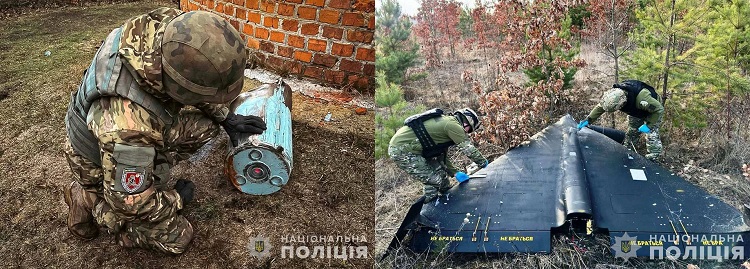
Over the last year, the Russian GERAN-2 drones have been modified to add new capabilities. Along with the opening of the Yelabuga factory in Tatarstan in Russia, the first modifications were made, such as the use of fibreglass instead of woven carbon fibre for the fuselage and the integration of Russian-made electronics.
The main changes made in the last year include the warhead, aimed at increasing the drone's lethality and flexibility, and the guidance system, in order to increase resistance to Ukrainian jamming and electronic warfare tactics.
As for the GERAN-2 warheads, to date, thanks to fragments or parts found following attacks, it is possible to establish the existence of at least 5 different types of warhead. A sixth warhead containing 90 kg of explosives has been added to these, the existence of which was confirmed in January 2025, following the discovery of a substantially intact specimen (in the photo, on the left) after the shooting down of a GERAN-2.
However, the most interesting changes concern the drone guidance system, which has seen the introduction of various solutions to resist jamming and spoofing. Among them, for example, the adoption of 3G/LTE modems to connect to the mobile internet network via SIM card, in order to use it for navigation, control and transmission of data and video in real time.
Another new feature is the introduction of new CRPA (Controlled Reception Pattern Antennas): these are advanced satellite reception systems designed to resist disturbances and interference that use a multi-antenna configuration and adaptive beamforming techniques so to reduce the effects of jamming, thus blocking unwanted signals and improving the reception of the meaningful GNSS signal.
According to Ukrainian intelligence, in addition to modifying the GERAN-2, Russia has developed a new drone model, called GERAN-3, which, like the SHAHED-238, is equipped with a turbojet engine, which would guarantee a top speed of 600 km/h, with a range of around 2, 000/2,500 km.








.png)
